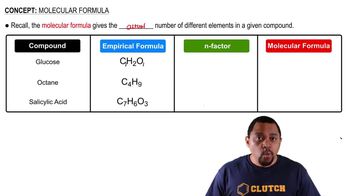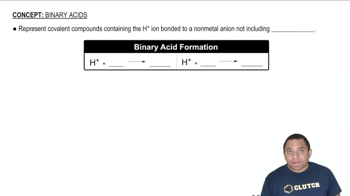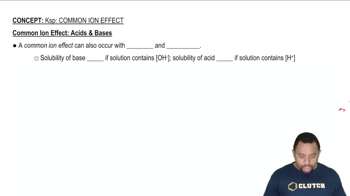Here are the essential concepts you must grasp in order to answer the question correctly.
Acid Formulas
Acids are substances that can donate protons (H+) in a solution. The formula of an acid typically starts with hydrogen (H) followed by the anion. Understanding the structure of the acid helps in writing its correct chemical formula, which reflects the number of hydrogen ions and the corresponding anion.
Recommended video:
Determining Molecular Formulas
Nomenclature of Acids
The nomenclature of acids is based on the anion present in the compound. For example, acids derived from anions ending in '-ate' typically end in '-ic' (e.g., phosphoric acid from phosphate), while those from anions ending in '-ite' end in '-ous' (e.g., chlorous acid from chlorite). This systematic naming helps in identifying the acid's composition.
Recommended video:
Common Acids and Their Formulas
Familiarity with common acids and their chemical formulas is essential in chemistry. For instance, phosphoric acid is H3PO4, hydrocyanic acid is HCN, and chlorous acid is HClO2. Recognizing these formulas allows for better understanding and communication of chemical reactions involving these acids.
Recommended video:
Common Ion Effect in Acids and Bases

 Verified step by step guidance
Verified step by step guidance


